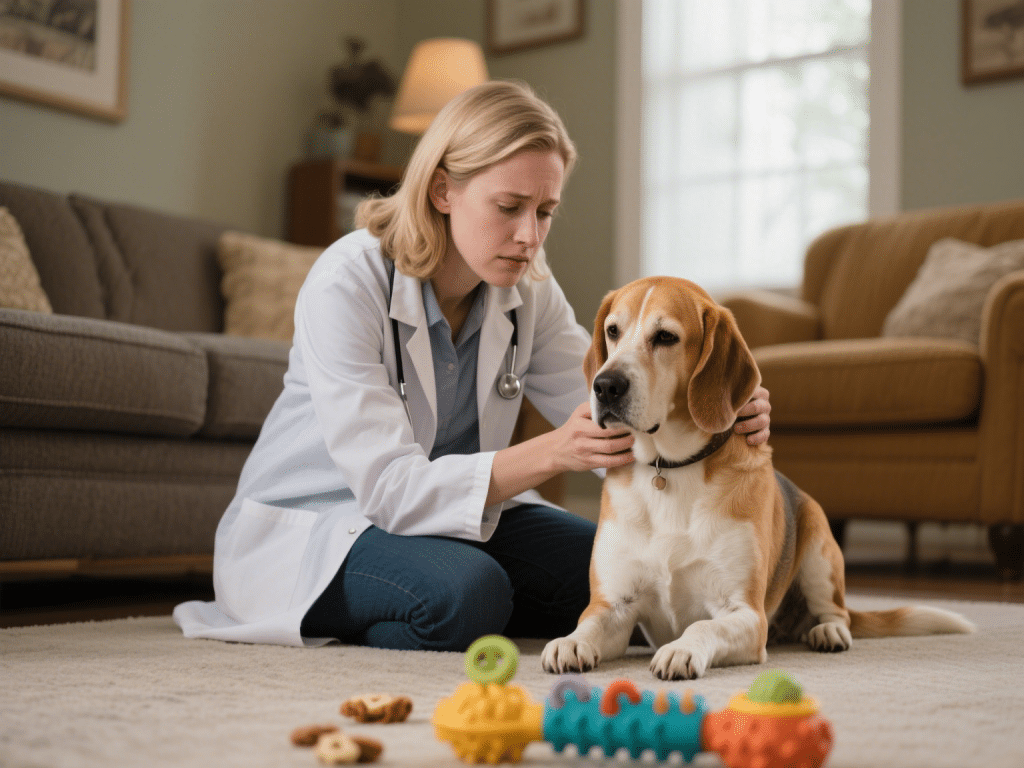
Rabbit Nutrition Myths Busted: What Your Bunny Really Needs
Over my 12 years as a small‑mammal nutrition specialist, I’ve encountered plenty of ...
Rescue dogs often arrive with a history of abandonment, neglect, or abuse. This can manifest as fearfulness or anxiety in new environments. Building trust requires patience, consistency, and understanding canine body language. This guide outlines practical steps to foster a secure bond and help your rescue dog overcome stress.
Signs of Fear: Cowering, trembling, tucked tail, flattened ears, avoidance behaviors.
Signs of Anxiety: Pacing, excessive panting, destructive chewing, over-grooming.
Recognizing these signals allows you to respond calmly and appropriately, preventing overwhelm.
Quiet Space: Dedicate a low-traffic area with a comfortable bed and familiar toys.
Predictable Routine: Feed, walk, and train at consistent times to reduce uncertainty.
Controlled Exposures: Introduce new sounds, people, and objects gradually to avoid overstimulation.
Treat-Based Rewards: Use high-value, soft treats (e.g., boiled chicken) to reward calm behavior.
Marker Words: Choose a simple clicker or word like “good” to signal desired actions.
Short Sessions: Keep interactions under five minutes initially, ending on a positive note.
Basic Commands: Start with “sit,” “down,” and “come.” Success boosts confidence and reinforces trust.
Target Training: Teach your dog to touch your hand or a target stick, establishing communication without pressure.
Interactive Toys: Provide puzzle feeders or treat-dispensing toys to encourage problem-solving in a low-stress setting.
One-on-One Introductions: Introduce new people and pets slowly, on-leash, and at a distance where the dog remains relaxed.
Controlled Encounters: Arrange brief meetings with calm, well-socialized dogs to model positive interactions.
Avoid Forcing Contact: Let the dog approach at its own pace; respect avoidance signals to prevent regression.
Counter-Conditioning: Associate fearful stimuli (e.g., vacuum) with high-value treats at a distance that does not trigger panic. Gradually decrease distance over weeks.
Desensitization: Use audio recordings of noises (thunder, fireworks) at low volume while rewarding calm behavior. Increase volume gradually as confidence grows.
Calming Aids: Consider pressure wraps (Thundershirt), pheromone diffusers (Adaptil), or calming supplements after consulting your veterinarian.
Gentle Touch: Stroke under the chin or chest rather than over the head; go slow and watch body language.
Verbal Reassurance: Speak in a soft, soothing tone; use the dog’s name to build positive associations.
Spend Quality Time: Offer quiet background companionship while reading or watching TV; your presence alone is reassuring.
Building trust with a rescue dog takes time, empathy, and consistency. By creating a secure environment, using positive reinforcement, and respecting your dog’s boundaries, you can help them overcome fear and anxiety. In return, you’ll foster a deep, lasting bond based on mutual trust and affection.

Over my 12 years as a small‑mammal nutrition specialist, I’ve encountered plenty of ...

Pet birds are prone to a range of diseases—from nutritional imbalances to respiratory in...

Gastrointestinal (GI) stasis—when a rabbit’s digestive motility slows or stops—is on...

With years of rabbit rescue volunteering under my belt, I’ve seen firsthand how a lack o...

Many dogs experience separation anxiety when left alone, exhibiting destructive behavior, ...

Proper socialization in the first three months of life lays the foundation for a confident...
Comments on "How to Build Trust with a Rescue Dog: Overcoming Fear and Anxiety" :